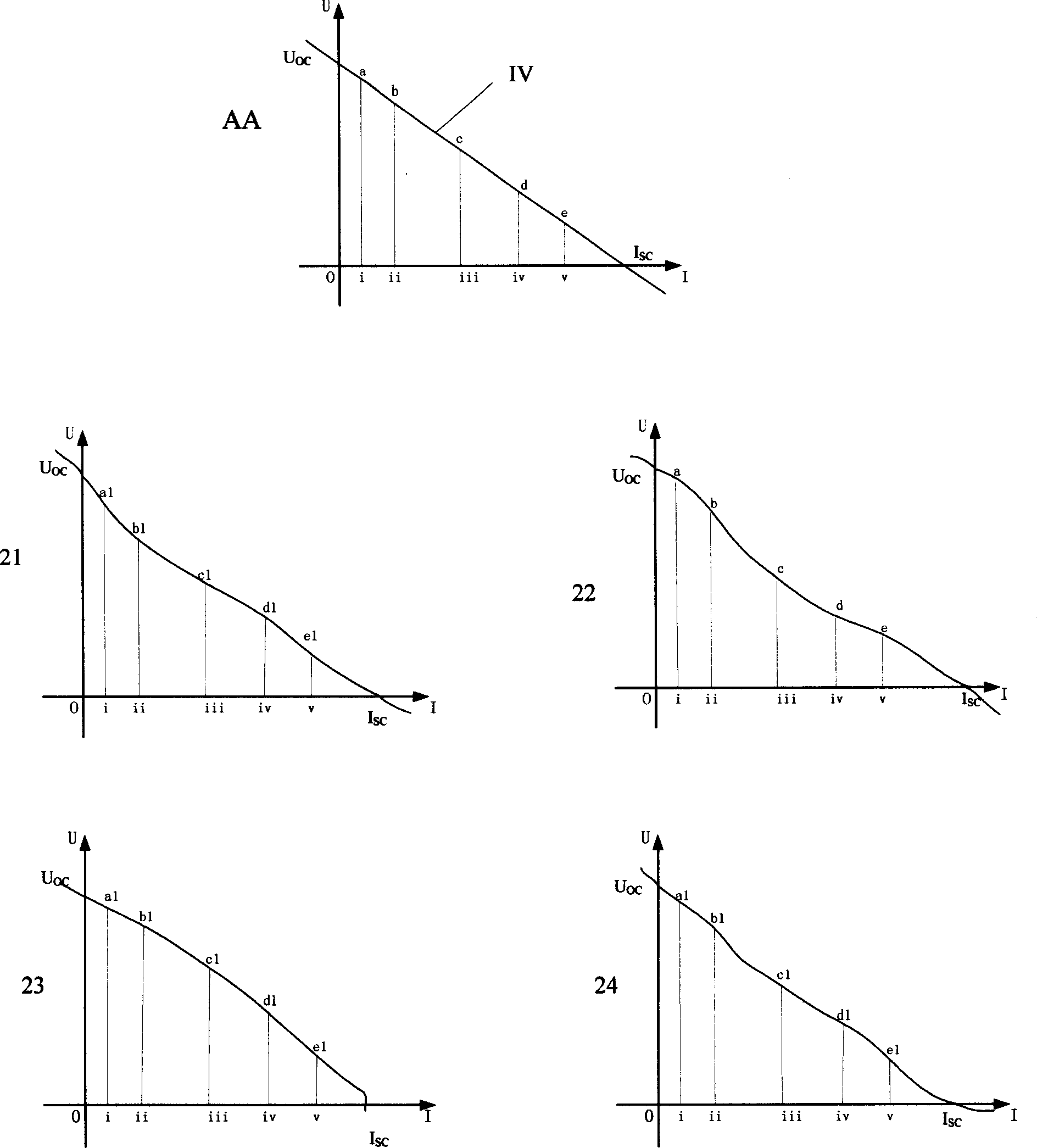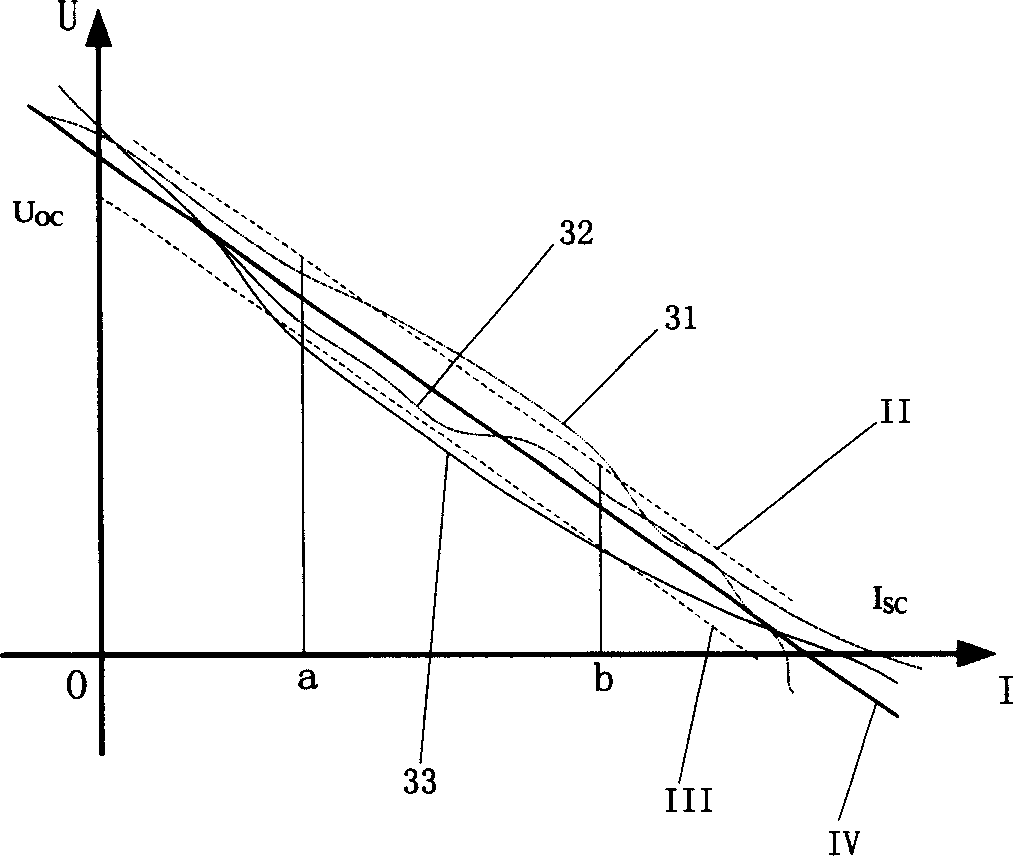Method for sorting batteries according to battery volt-ampere curve
A technology of volt-ampere curves and volt-ampere characteristic curves, which is applied in the field of sorting batteries and sorting batteries according to the battery volt-ampere curves, can solve the problems of long detection time and large energy consumption, and achieve fast sorting speed, accurate classification, The effect of high sorting quality
- Summary
- Abstract
- Description
- Claims
- Application Information
AI Technical Summary
Problems solved by technology
Method used
Image
Examples
Embodiment 1
[0034] 10 AA Ni-MH secondary batteries to be tested are placed in the battery testing equipment, and the discharge test is carried out under the control of the computer, the voltage and current of each battery are collected and recorded, and the internal resistance R and maximum power point P of the battery are calculated. The battery labels are: 1, 2, 3, ..., 10, and the data records are shown in the following table:
[0035] Battery
u OC (mV)
I SC (A)
R (mΩ)
P(W)
1
1235
81.25
15.2
25.10
2
1326
82.36
16.1
27.00
3
1255
82.03
15.3
25.85
4
1213
69.31
17.50
21.12
5
1256
55.58
22.60
18.45
6
1302
102.52
12.70
34.06
7
1163
57.29
20.30
18.21
8
...
Embodiment 2
[0041] 10 AAA Ni-MH secondary batteries to be tested are placed in the battery testing equipment, and the discharge test is controlled by a computer, and the open circuit voltage U of each battery is collected and recorded. OC , short-circuit current I SC , and calculate the internal resistance R of the battery. If the battery labels are: 1, 2, 3, ..., 10, the data records are shown in the following table:
[0042] Battery
u OC (mV)
I SC (A)
R (mΩ)
P(W)
11
1235
57.44
21.5
18.23
12
1326
54.57
24.3
17.58
13
1255
55.04
22.8
17.32
14
1213
45.43
26.7
13.60
15
1256
56.58
22.2
17.59
16
1302
45.05
28.9
14.99
17
1163
39.83
29.2
12.08
18
1252 ...
Embodiment 3
[0049] refer to figure 2 , after the secondary batteries labeled 21, 22, 23, and 24 are placed in the testing equipment for high-current charge and discharge tests, the computer collects and processes the data to form a volt-ampere characteristic curve. If you choose a tested battery AA volt-ampere The characteristic curve is the standard curve IV. Five characteristic points are selected at different current levels i, ii, iii, iv, and v: a, b, c, d, e, and the error range is ±50mV. The voltage of the characteristic points is as follows As shown in the table:
[0050] Unit: (mV)
[0051] a
b
c
d
e
IV
1174
1001
732
480
252
[0052] The test batteries 21, 22, 23, 24 take the corresponding characteristic points: a1, b1, c1, d1, e1, and the voltage values of each point obtained by computer sampling are shown in the following tabl...
PUM
 Login to View More
Login to View More Abstract
Description
Claims
Application Information
 Login to View More
Login to View More - R&D
- Intellectual Property
- Life Sciences
- Materials
- Tech Scout
- Unparalleled Data Quality
- Higher Quality Content
- 60% Fewer Hallucinations
Browse by: Latest US Patents, China's latest patents, Technical Efficacy Thesaurus, Application Domain, Technology Topic, Popular Technical Reports.
© 2025 PatSnap. All rights reserved.Legal|Privacy policy|Modern Slavery Act Transparency Statement|Sitemap|About US| Contact US: help@patsnap.com



